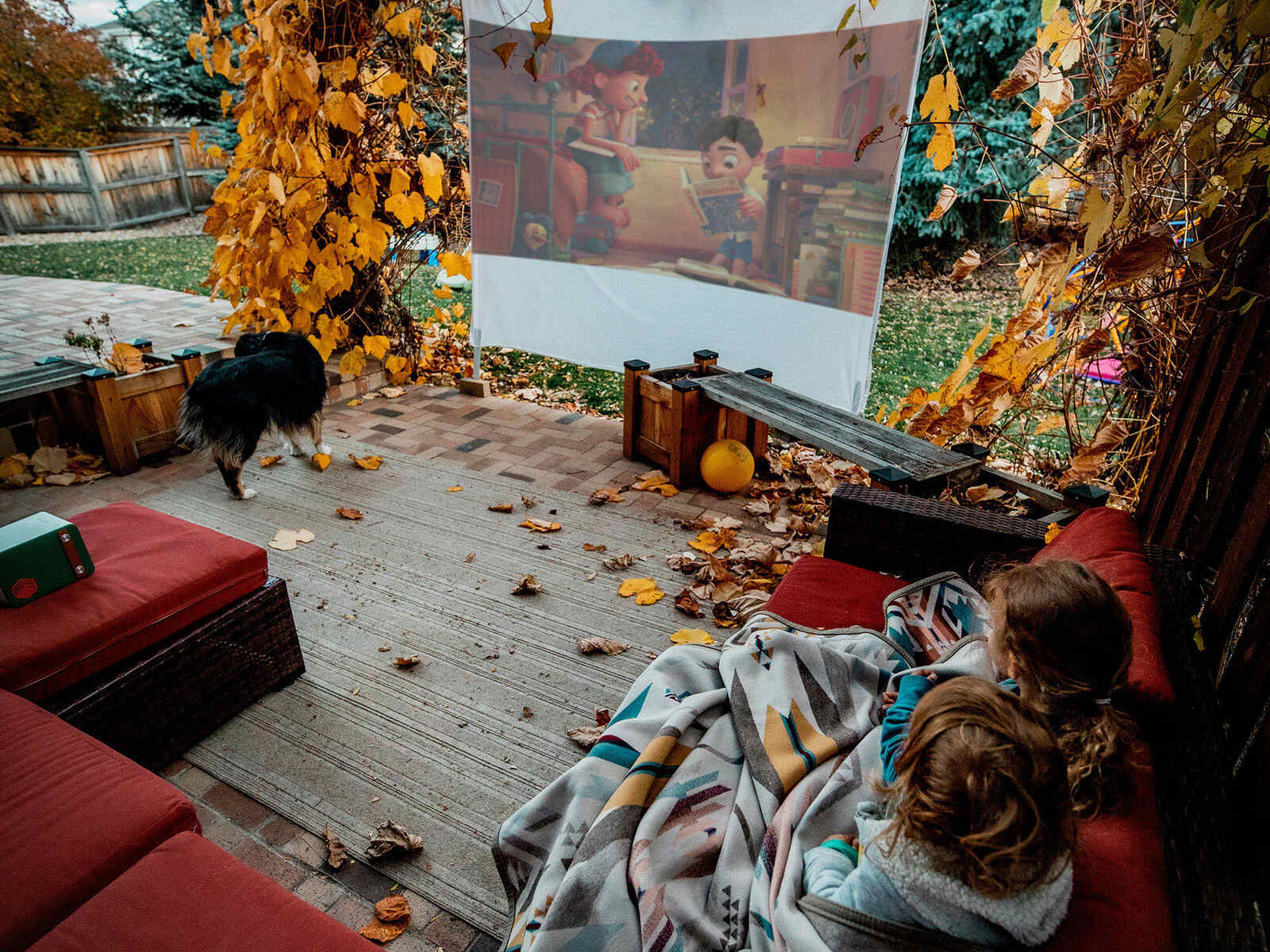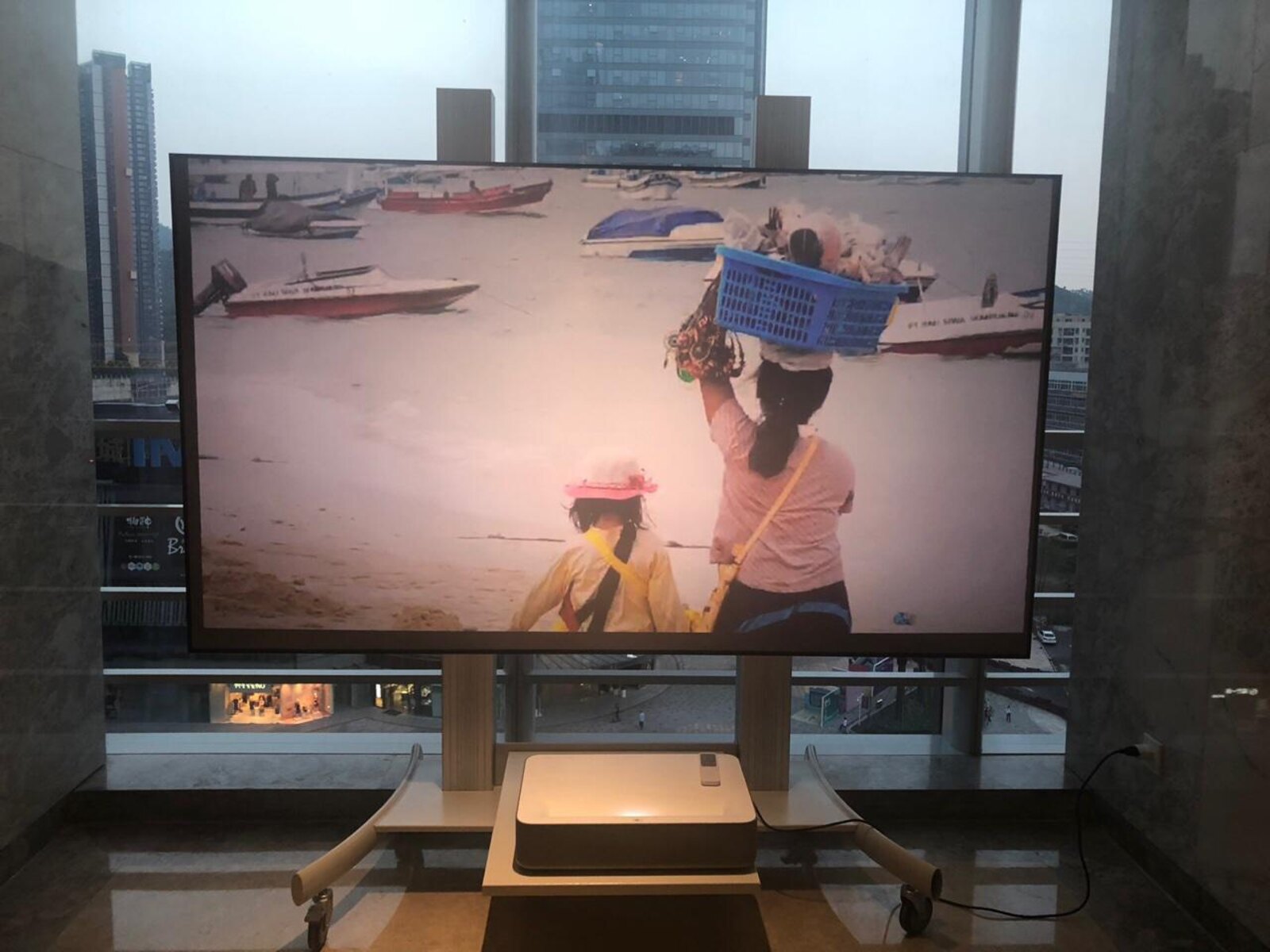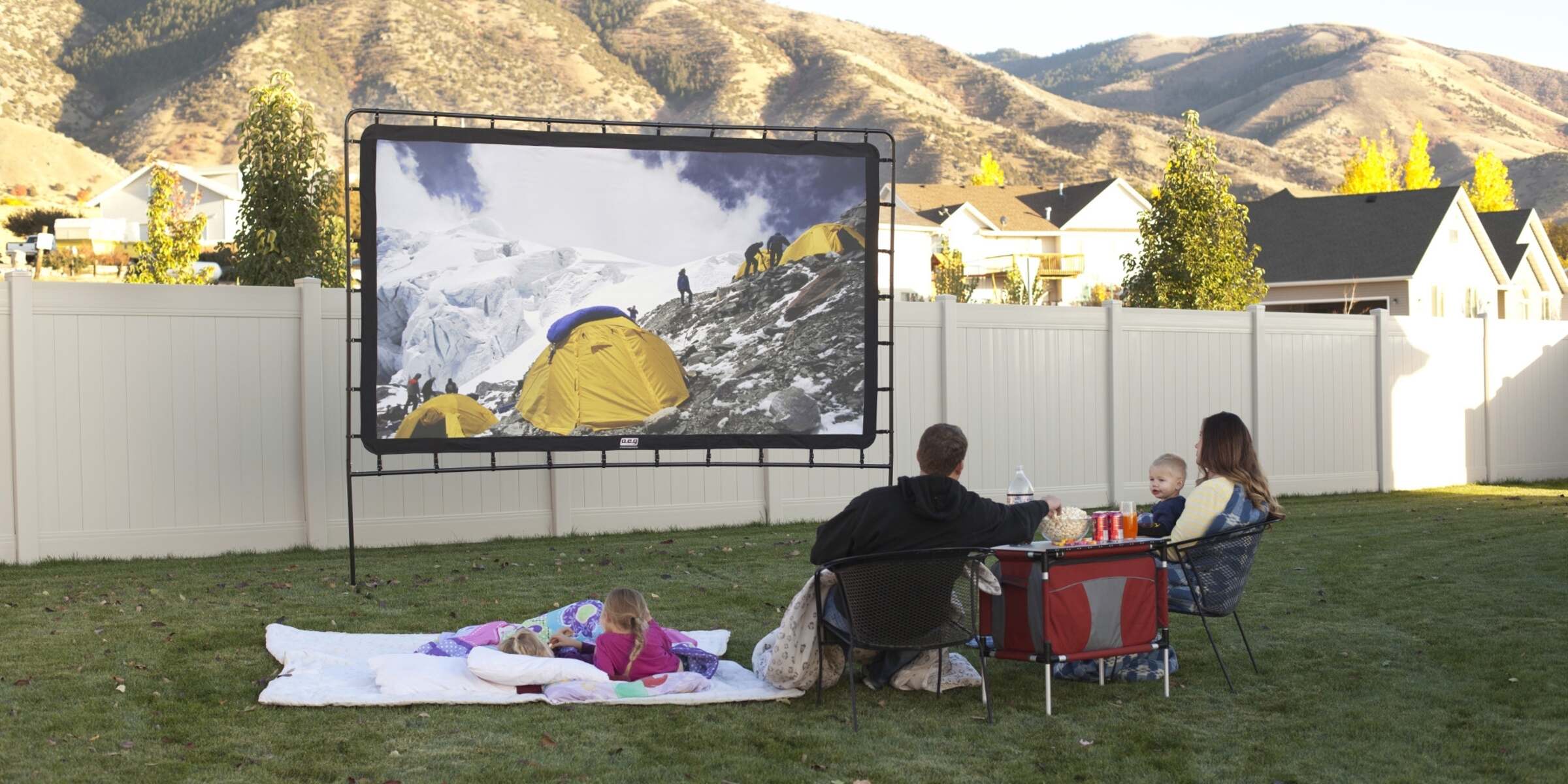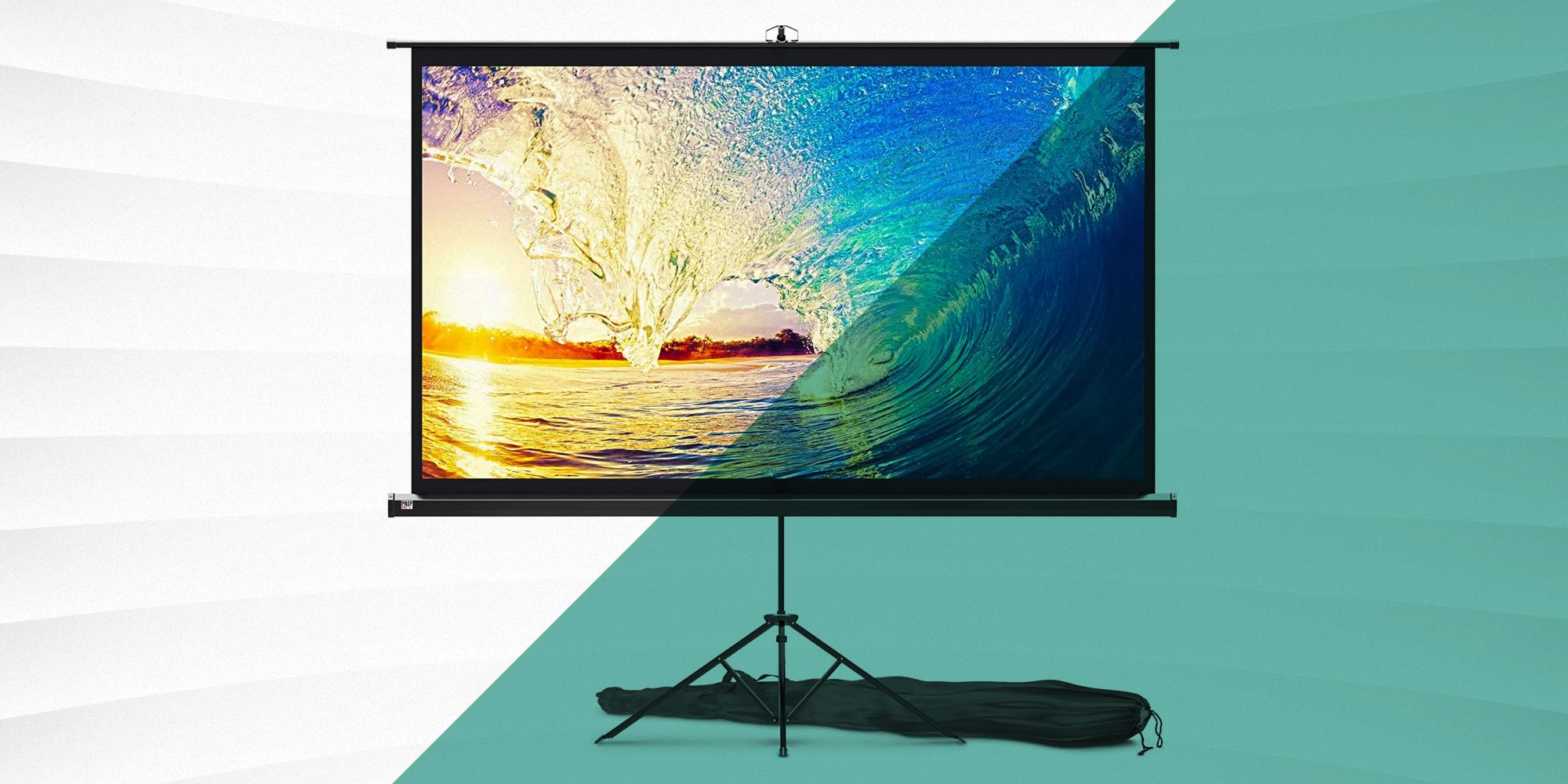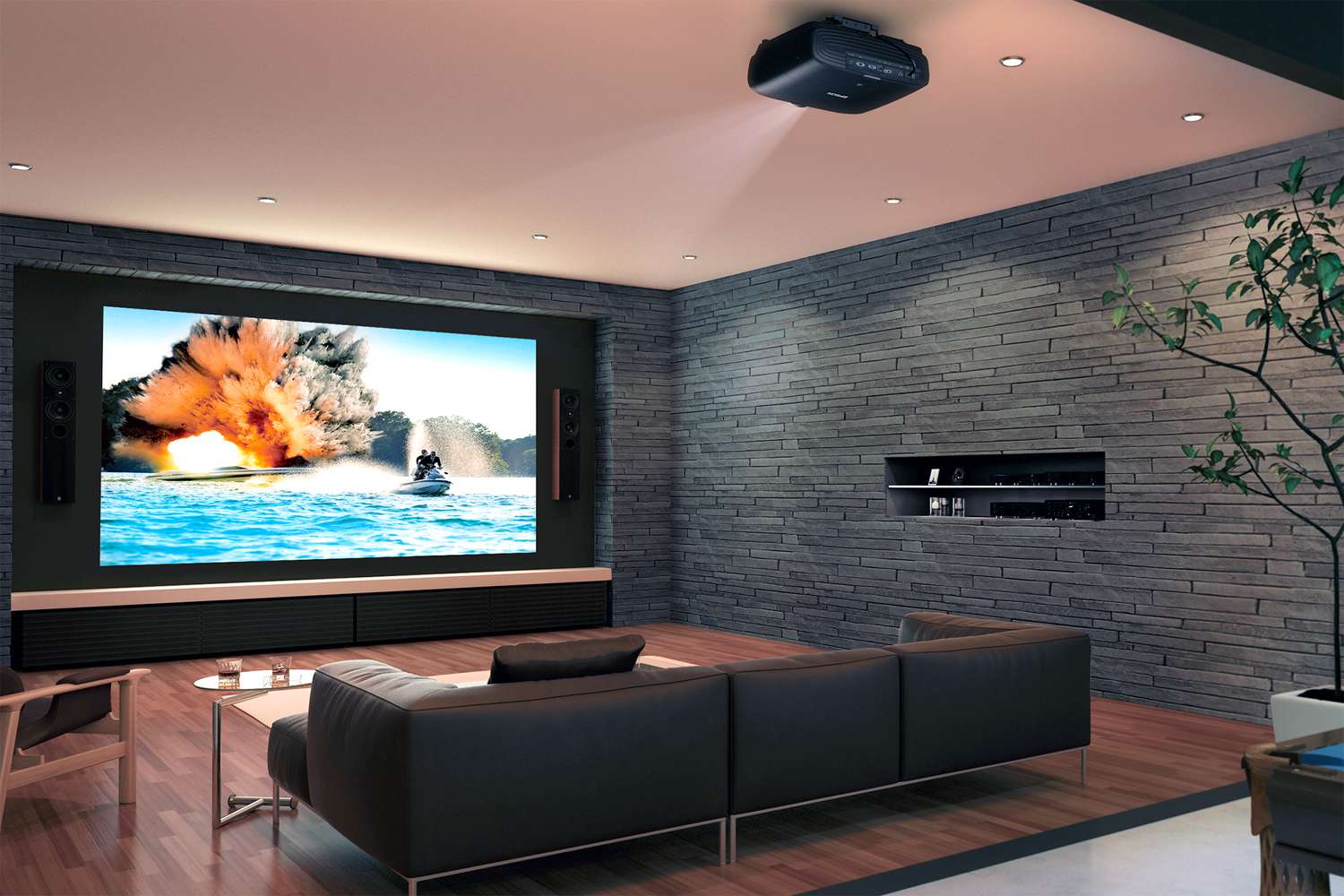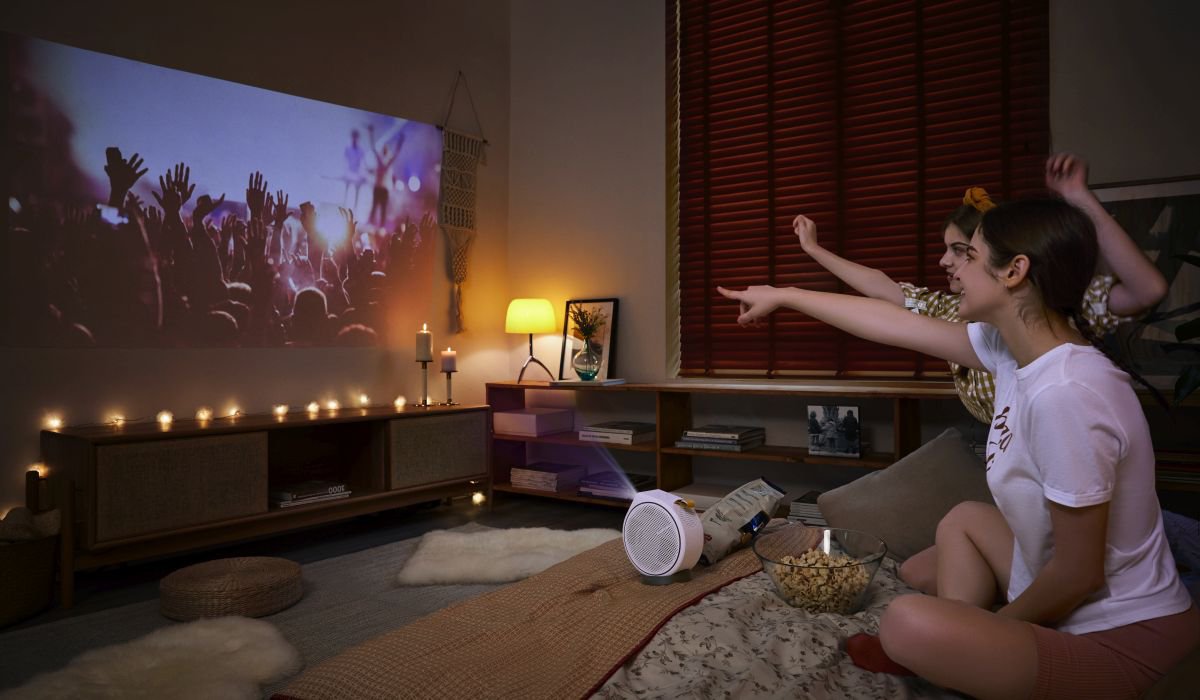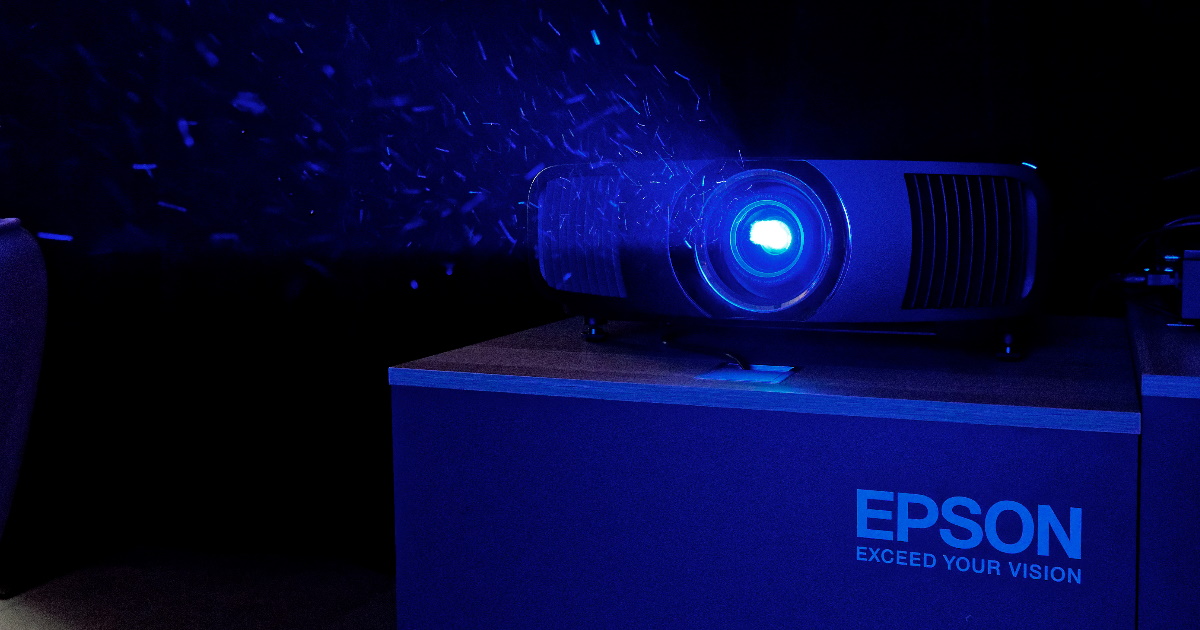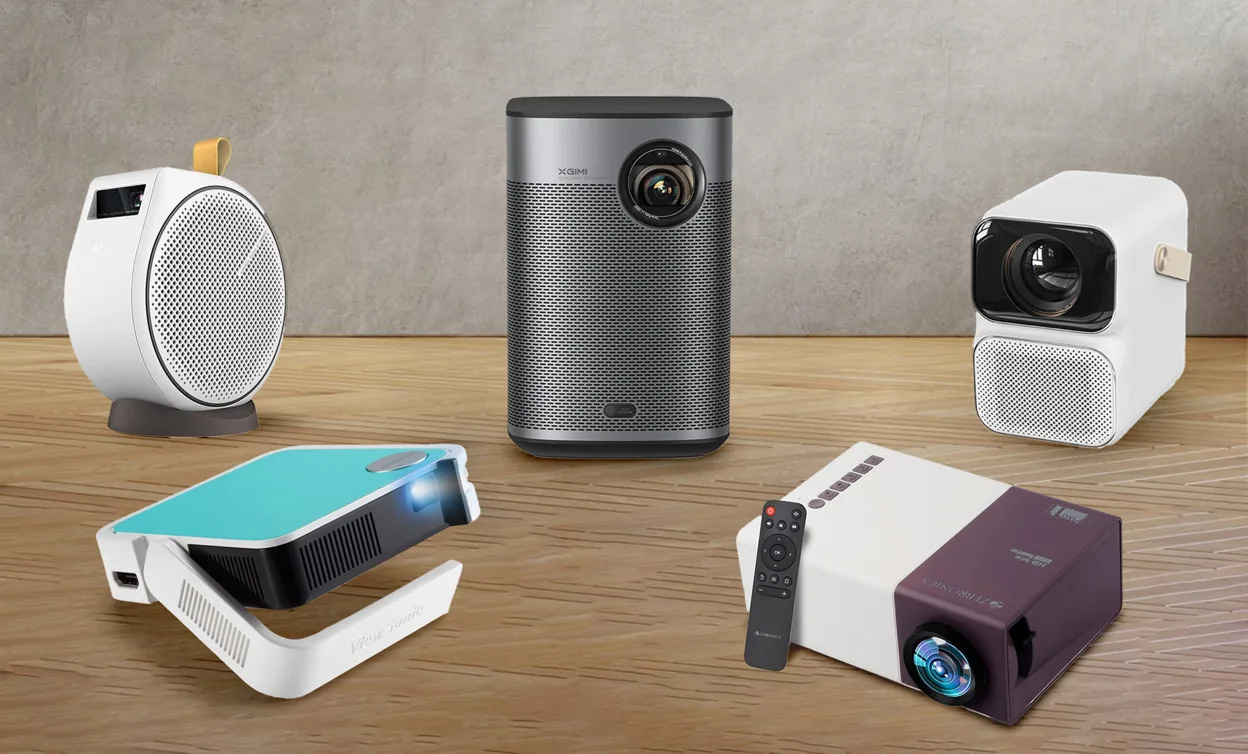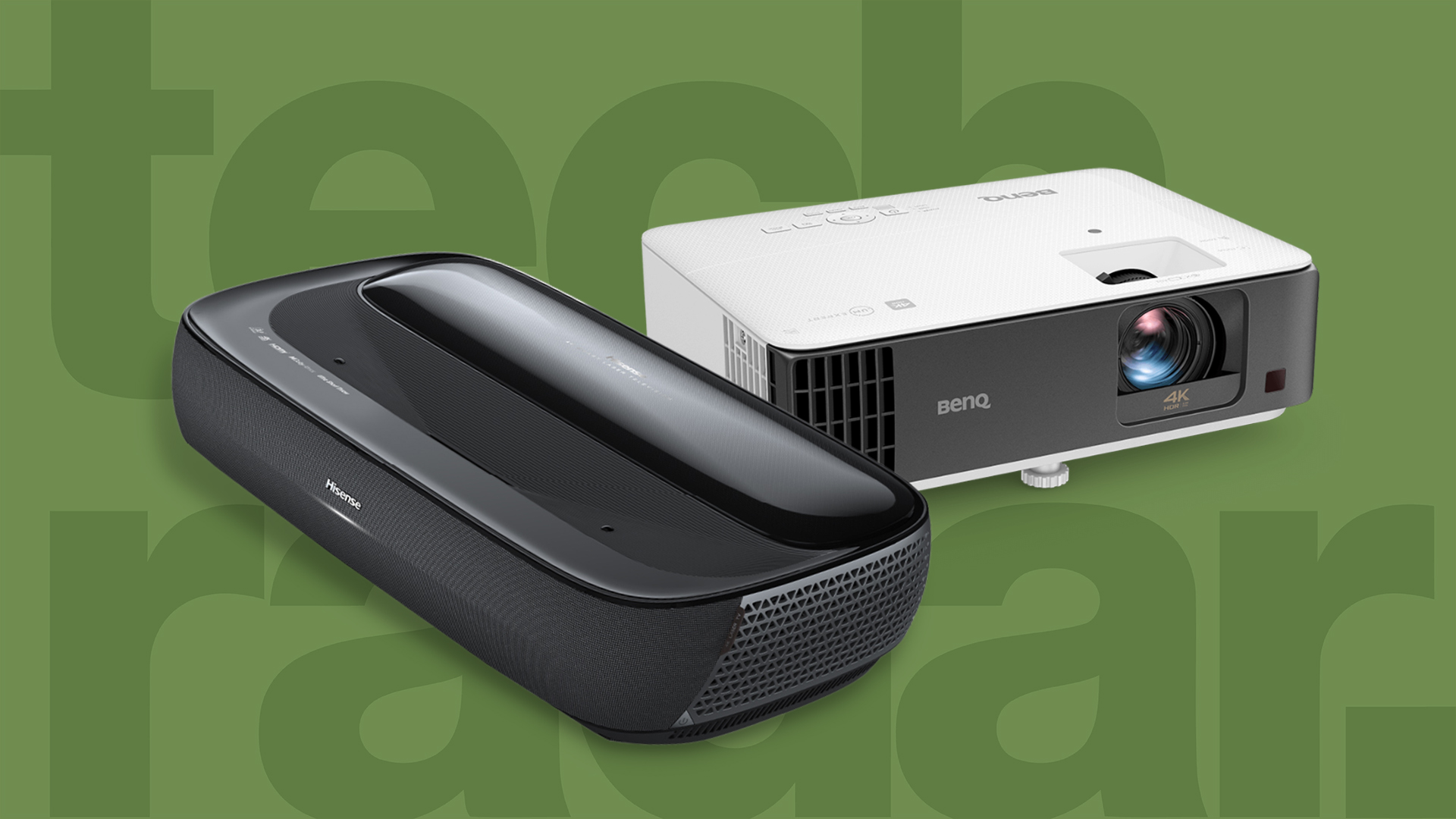Projector Requirements for Daylight Use
When looking for a projector that performs well in daylight conditions, there are certain key factors to consider. The following criteria will ensure that you select a projector that delivers optimal brightness, contrast, resolution, and connectivity, while also being portable and durable.
Brightness
One of the most important factors when choosing a projector for daylight use is brightness. Look for projectors with high lumen ratings as they will produce brighter images that are more visible in well-lit environments. A projector with at least 2500 lumens is recommended for daytime viewing.
Contrast
Contrast ratio is another crucial aspect to consider, as it determines the difference between the brightest and darkest parts of an image. A projector with a high contrast ratio will deliver better image quality and clarity, even in bright sunlight.
Resolution
A higher resolution projector ensures clearer and more detailed images. Opt for a projector with a native resolution of at least 1080p to guarantee sharp and vibrant visuals, even when used in daylight.
Connectivity Options
Having versatile connectivity options is important to ensure that your projector can be easily connected to different devices. Look for projectors with multiple HDMI ports, VGA inputs, and wireless connectivity options for seamless integration with various devices.
Screen Quality and Reflectivity
Choosing a high-quality screen that has good reflectivity is crucial for daylight viewing. Consider investing in a screen specifically designed for outdoor use or one with a higher gain to enhance the brightness and visibility of the projected image.
Keystone Correction
Keystone correction allows for adjustments to correct image distortion caused by an uneven projector placement. Look for projectors with vertical and horizontal keystone correction capabilities to ensure a properly aligned and accurate image.
Portability and Durability
If you plan on using the projector in outdoor settings, consider its portability and durability. Look for lightweight projectors that are easy to transport and models with a rugged design that can withstand outdoor conditions.
Customer Reviews and Recommendations
Research customer reviews to gain insights into real-world experiences with projectors in daylight settings. Pay attention to feedback regarding image visibility, brightness, and performance under different lighting conditions.
Budget Considerations
While budget is always a factor, it’s important to find a balance between performance and cost. Consider the features and specifications that are most important for your daylight viewing needs and choose a projector that fits within your budget range.
Brightness
Brightness is a crucial factor to consider when selecting a projector for daylight use. In outdoor or well-lit environments, the ambient light can wash out the image, making it difficult to see. Therefore, it is important to choose a projector that offers high brightness levels to counteract the external light.
When it comes to brightness, lumens are the unit of measurement. The higher the lumen rating, the brighter the projector’s image will be. For daylight viewing, it is recommended to choose a projector with a lumen rating of at least 2500. This will ensure that the image remains visible and clear, even in brightly lit areas.
It is worth noting that while a higher lumen rating is desirable, it should be balanced with other factors such as contrast ratio and image quality. A projector with a high lumen rating but low contrast ratio may result in washed-out colors and a lack of depth in the image. Therefore, it is important to consider both brightness and contrast when choosing a projector for daylight use.
In addition to the lumen rating, consider the projector’s brightness settings and adjustability. Some projectors offer different brightness modes, such as eco mode or dynamic mode, which can be useful for optimizing the image quality based on the lighting conditions. Opting for a projector with adjustable brightness settings can provide flexibility in adapting to different environments.
Keep in mind that the projector’s brightness can also be affected by the size and material of the screen used. A higher-gain screen can help enhance the projector’s brightness by reflecting more light back to the viewer. Therefore, it is important to consider the screen’s quality and reflectivity in conjunction with the projector’s brightness specifications.
Ultimately, choosing a projector with adequate brightness is essential for achieving optimal visibility and image quality in daylight settings. By selecting a projector with a high lumen rating, adjustable brightness settings, and considering the screen quality, you can ensure that your projector performs well even in well-lit environments.
Contrast
In addition to brightness, contrast is a crucial factor to consider when selecting a projector for daylight use. Contrast ratio refers to the difference between the darkest and brightest parts of an image. A higher contrast ratio ensures that the image is crisp, detailed, and visually engaging, even in well-lit environments.
When it comes to contrast, the higher the ratio, the better the image quality. A projector with a high contrast ratio will provide greater differentiation between light and dark areas, resulting in more vibrant colors and enhanced depth perception. This is particularly important in daylight settings, where the external lighting can potentially wash out the image.
To ensure optimal contrast performance, look for projectors with a contrast ratio of at least 1000:1. This means that the brightest part of the image will be 1000 times brighter than the darkest part. However, it is important to note that contrast ratio alone does not guarantee superior image quality. Other factors, such as brightness, color accuracy, and image processing capabilities, also play a significant role in determining the overall image performance.
Dynamic contrast ratio, often found in projectors, is a feature that automatically adjusts the contrast based on the content being displayed. This can help improve the image quality by enhancing the contrast in darker scenes and reducing it in brighter scenes. Consider opting for a projector with dynamic contrast ratio if you want to further enhance the image quality in daylight settings.
Another aspect to consider in relation to contrast is the projector’s black level performance. Deep blacks contribute to a more immersive viewing experience and improve the overall image quality. Look for projectors that can produce deep blacks, as they will provide a greater sense of realism and detail, even in well-lit environments.
Ultimately, choosing a projector with a high contrast ratio and strong black level performance is crucial for achieving excellent image quality in daylight settings. By ensuring that the projector can deliver vibrant colors, sharp details, and a wide range of contrast, you can enjoy a visually stunning experience, even in bright outdoor environments.
Resolution
Resolution is an important consideration when choosing a projector for daylight use. It refers to the number of pixels that can be displayed on the screen, which directly affects the clarity and level of detail in the projected image.
For optimal viewing experience in daylight, it is recommended to choose a projector with a native resolution of at least 1080p. This means that the projector has a display resolution of 1920 x 1080 pixels, providing sharp and clear visuals. Higher resolutions, such as 4K, offer even greater detail, but can also come at a higher price point.
A projector with a higher resolution ensures that the image remains sharp and detailed, even in well-lit environments where external light may wash out the image. This is especially important if you plan to project text or detailed visuals, as lower resolutions can result in blurry or pixelated images.
In addition to native resolution, some projectors offer upscaling capabilities, allowing them to enhance lower resolution content to make it appear sharper. While upscaling can improve the quality of lower resolution content, it is still advisable to choose a projector with a native resolution that meets your daylight viewing needs.
It is worth noting that the optimal viewing distance should also be considered when selecting the right projector resolution. If you plan to sit closer to the screen, a higher resolution will help maintain image clarity. Conversely, if you plan to sit further away, a slightly lower resolution may still provide a satisfactory viewing experience.
Keep in mind that resolution is not the sole determinant of image quality. Other factors like brightness, contrast, and color accuracy also contribute to the overall visual experience. Therefore, it is important to consider resolution in conjunction with these other factors to ensure an immersive and enjoyable viewing experience in daylight.
By selecting a projector with a higher resolution, you can ensure that the projected image remains sharp, detailed, and visually appealing, even when used in well-lit environments. Whether you are watching videos, giving presentations, or enjoying outdoor movie nights, a higher resolution projector will elevate your viewing experience and ensure that every detail comes to life.
Connectivity Options
Having versatile connectivity options is an important consideration when selecting a projector for daylight use. The ability to easily connect and integrate with various devices ensures a seamless and convenient experience, whether you are presenting, gaming, or streaming content.
One of the essential connectivity options to look for in a projector is HDMI ports. HDMI (High-Definition Multimedia Interface) allows for high-quality audio and video transmission from devices such as laptops, gaming consoles, DVD players, and streaming devices. Make sure the projector has at least one HDMI port, as it is a commonly used connection standard.
In addition to HDMI, VGA inputs are also important, especially if you plan to connect older devices or computers. VGA (Video Graphics Array) is an analog standard that supports video transmission and is commonly found on older laptops, desktops, and projectors. Having a VGA input offers flexibility for connecting a wider range of devices.
Wireless connectivity options, such as Wi-Fi or Bluetooth, are increasingly popular and convenient. They allow you to connect wirelessly to compatible devices, eliminating the hassle of cables and improving mobility. Wireless connectivity can be particularly useful when streaming content from smartphones or tablets, or when sharing presentations wirelessly.
Some projectors also offer USB ports, which allow you to directly connect USB drives or external hard drives to access media files without the need for a separate device. This can be handy when you want to easily play videos, display photos, or deliver presentations directly from a USB storage device.
Consider the type and number of connectivity options that best suit your needs. Having multiple connection options ensures that you can easily connect and switch between devices without the need for additional adapters or cables.
It is also important to check the compatibility of the projector with the devices you plan to connect. Ensure that the projector supports the required video and audio formats and resolutions. Compatibility issues can limit the seamless integration and functionality of the projector with your devices.
By choosing a projector with versatile connectivity options, you can effortlessly connect and enjoy content from a wide range of devices, enhancing the flexibility and convenience of your daylight viewing experience.
Screen Quality and Reflectivity
When choosing a projector for daylight use, it is important to consider both the quality of the screen and its reflectivity. The screen directly impacts the visibility and clarity of the projected image, making it an essential component of your overall viewing experience.
Opting for a high-quality screen specifically designed for outdoor use or daylight viewing can significantly enhance the brightness and visibility of the projected image. Outdoor screens are often made of materials that are more resistant to external elements and provide better reflectivity, allowing for better image visibility even in bright sunlight.
The reflectivity of the screen is an important factor to consider, as it determines how efficiently the light from the projector is reflected back to the viewer. Screens with a higher gain value have better reflectivity, meaning they can reflect more light back, resulting in a brighter and more vibrant image. However, screens with high gain values may also have narrower viewing angles, so it is important to strike a balance between gain and optimal viewing angles.
It is worth noting that the size of the screen also plays a role in daylight visibility. A larger screen size allows for a bigger projected image, making it easier to see from a distance in well-lit environments. However, it is important to ensure that the projector has enough brightness to maintain image quality on a larger screen.
Considering the screen setup is equally important. Positioning the screen in a way that minimizes ambient light hitting the surface can enhance visibility. This can be achieved by choosing a shaded area or using additional shading devices like canopies or tents to block direct sunlight. Additionally, adjusting screen angles and tilt can further optimize image visibility by minimizing glare.
Lastly, regular cleaning and maintenance of the screen are essential for preserving the image quality. Dust, dirt, and smudges can diminish the reflectivity and overall clarity of the projected image. Clean the screen regularly using appropriate cleaning techniques and materials to ensure optimal performance.
By investing in a high-quality screen with good reflectivity and considering its setup and maintenance, you can significantly improve the visibility and clarity of the projected image in daylight settings. A well-chosen and well-maintained screen will enhance your overall viewing experience and ensure that you can enjoy your content with optimal image quality, even in bright outdoor environments.
Keystone Correction
When setting up a projector for daylight use, it is important to consider the keystone correction feature. Keystone correction allows you to adjust the shape and alignment of the projected image to compensate for any distortion caused by the placement of the projector.
In some cases, you may not be able to place the projector directly in front of the screen due to physical limitations or the layout of the space. This can result in a trapezoid-shaped image, commonly referred to as keystone distortion. Keystone correction helps to rectify this distortion, ensuring that the image appears square and proportional.
Projectors typically offer both vertical and horizontal keystone correction capabilities. Vertical keystone correction allows you to adjust the image vertically, while horizontal keystone correction allows for horizontal adjustments. These adjustments can be made either manually using a built-in control panel or remotely through the projector’s settings.
When selecting a projector for daylight use, choosing one with advanced keystone correction features is advantageous. Look for projectors that offer automatic or digital keystone correction. These features use image processing technology to automatically adjust the image so that it appears square and proportional, meaning less time spent manually adjusting and aligning the projector.
However, it’s important to note that excessive keystone correction can degrade the image quality. The more correction needed, the more distortion may occur, leading to a loss of resolution and clarity. It’s recommended to keep the keystone correction adjustments to a minimum to maintain optimal image quality.
In addition to keystone correction, some projectors also offer additional image adjustment features like corner correction or manual pixel alignment. These features can further fine-tune the image to ensure that it appears correctly and in its best form.
Proper positioning and setup can help minimize the need for extensive keystone correction. Placing the projector at the right distance and angle, along with using adjustable mounting options, can greatly reduce the keystone distortion. Investing in a projector with flexible lens shift capabilities can also be beneficial, as it allows for adjustments without relying solely on keystone correction.
By considering keystone correction capabilities and positioning the projector correctly, you can ensure a properly aligned and accurate image, minimizing distortion and maximizing the clarity and quality of the projected image in daylight conditions.
Portability and Durability
When selecting a projector for daylight use, considering its portability and durability is important, especially if you plan on using it outdoors or in different locations. Portability allows for easy transport and setup, while durability ensures that the projector can withstand various environmental conditions.
Portability is particularly relevant if you frequently move or travel with your projector. Look for lightweight and compact models that are easy to carry. Portable projectors often come with a handy carrying case or bag, making it convenient to transport them from one place to another. Consider the weight and dimensions of the projector to ensure that it fits your mobility needs.
In addition to size and weight, battery-powered projectors offer even greater portability. These projectors eliminate the need for a power outlet, allowing you to use them in outdoor spaces or any location without easy access to electricity. However, it’s important to note that battery-powered projectors may have limitations in terms of brightness and operating time, so weigh the pros and cons according to your specific requirements.
Durability is also a crucial factor, especially if you plan on using the projector outdoors or in rugged environments. Look for projectors with sturdy build quality and robust materials that can withstand potential bumps, drops, or exposure to dust and moisture. Ruggedized projectors often come with features like reinforced exteriors, sealed optical components, and additional cooling mechanisms to enhance durability.
Consider the projector’s resistance to environmental factors such as water, dust, and extreme temperatures. Look for projectors with an IP (Ingress Protection) rating that guarantees protection against water and dust ingress. Opting for a projector with an appropriate IP rating ensures that it can handle outdoor conditions without compromising its functionality.
Another aspect to consider is the projector’s cooling system. Natural daylight can generate heat, and prolonged exposure to high temperatures can affect the performance and lifespan of the projector. Look for projectors with efficient cooling systems that can dissipate heat effectively, allowing for continuous operation without overheating.
Reading customer reviews and checking for product certifications, such as MIL-STD-810G for durability, can provide valuable insights into the projector’s portability and durability. Pay attention to feedback regarding build quality, ease of transport, and performance in different environments.
By selecting a portable projector with durability features, you can enjoy the flexibility of using it in various locations and outdoor settings without worrying about potential damage. A robust and portable projector ensures that your daylight viewing experience remains hassle-free and enjoyable, regardless of the environment you are in.
Customer Reviews and Recommendations
When it comes to choosing a projector for daylight use, customer reviews and recommendations can provide valuable insights and guidance. Real-world experiences and feedback from other users can help you make an informed decision and ensure that the projector meets your specific needs and expectations.
One of the most reliable sources of information is customer reviews. Reading through reviews on reputable websites or online marketplaces can provide insights into the performance, reliability, and overall satisfaction of a particular projector model. Pay attention to reviews that specifically mention daylight use and the projector’s performance in well-lit environments.
Look for patterns and trends in customer reviews. If multiple users mention consistent positive aspects such as brightness, image quality, and outdoor performance, it’s a good indication that the projector is suitable for daylight use. Conversely, if there are recurring negative comments regarding the projector’s visibility or performance in outdoor settings, it may be a good idea to reconsider that particular model.
Additionally, customer recommendations and ratings can help narrow down your choices. Consider projectors with high ratings and positive recommendations from users who have similar requirements or usage scenarios. Recommendations from professionals or experts in the field of projectors can also be valuable, as they have typically tested and evaluated multiple models.
Don’t hesitate to reach out to friends, colleagues, or online communities for their personal experiences and recommendations. Hearing firsthand experiences from people you trust can provide valuable insights and potentially lead you to discover lesser-known projector models that excel in daylight conditions.
When considering customer reviews and recommendations, it is important to keep in mind the specific requirements and preferences that are relevant to your daylight use. Consider the specific use case scenarios, such as outdoor movie nights, presentations, or sports viewing, and look for feedback from customers who have used the projector in similar situations.
Lastly, while customer reviews and recommendations can provide helpful insights, it is still important to weigh them alongside the objective specifications and features of the projector. Balance customer feedback with technical specifications, such as brightness, contrast ratio, and resolution, to ensure that the projector meets your specific daylight viewing needs.
By considering customer reviews and recommendations, you can gain valuable insights into the performance, reliability, and overall satisfaction of different projector models in daylight conditions. These firsthand experiences from other users can guide you towards finding a projector that will deliver optimal image quality and visibility, enhancing your daylight viewing experience.
Budget Considerations
When selecting a projector for daylight use, budget is an important factor to consider. It is essential to find a projector that not only meets your daylight viewing needs but also fits within your budget range.
Before starting your search, determine your budget and prioritize the key features that are essential for your specific requirements. Consider the trade-offs you are willing to make to stay within your budget without compromising on the overall quality or performance of the projector.
It’s worth noting that higher-priced projectors often come with advanced features such as higher brightness, better contrast ratio, and improved image quality. However, this doesn’t mean that more affordable projectors cannot meet your daylight viewing needs. There are many budget-friendly options available in the market that offer solid performance in well-lit environments.
While researching projectors within your budget, consider the essential specifications such as brightness, contrast ratio, resolution, and connectivity options. Look for budget-friendly projectors that prioritize brightness, as this is crucial for optimal visibility in daylight conditions. Affordable projectors with at least 2500 lumens can provide satisfactory brightness levels for outdoor or well-lit environments.
It’s also important to read customer reviews and recommendations for budget-friendly projectors. By considering the experiences and feedback of other users, you can gain insights into how well these projectors perform in daylight settings. Look for positive reviews and comments specifically related to daylight use.
Consider the overall value for money that a projector offers. Determine whether the performance, durability, and features of the projector align with its price point. Sometimes, spending a bit more on a higher-quality projector can save you from potential frustrations in the long run.
Don’t forget to factor in additional costs such as screen or mounting equipment when considering your budget. These accessories can enhance your viewing experience but may add to the overall cost.
Lastly, keep in mind that your budget can be flexible. There may be deals, discounts, or promotions available that can make higher-quality projectors more affordable. Be sure to keep an eye out for sales or special offers to maximize your budget.
By setting a budget range, prioritizing key features, and considering customer reviews, you can find a projector that meets your daylight viewing needs without breaking the bank. With a little research and careful consideration, you can strike a balance between functionality, performance, and affordability, ensuring a satisfying daylight viewing experience within your budget.
Conclusion
Selecting the right projector for daylight use requires careful consideration of various factors. By taking into account the brightness, contrast, resolution, connectivity options, screen quality, keystone correction, portability, durability, customer reviews, and budget considerations, you can make an informed decision and choose a projector that provides optimal performance in well-lit environments.
Brightness is crucial for visibility in daylight settings, so choosing a projector with high lumen ratings ensures a bright and clear image. Contrast ratio and resolution contribute to image quality, providing vibrant colors and sharp details. Versatile connectivity options allow for seamless integration with different devices, enhancing flexibility. Additionally, screen quality, keystone correction, portability, and durability are factors to consider for an immersive and convenient experience.
Customer reviews and recommendations offer valuable insights into real-world experiences, helping you assess a projector’s performance in daylight scenarios. And while budget is an important factor, balancing features and specifications with cost can lead to finding a projector that meets your needs without compromising on quality.
Keep in mind that each individual’s requirements may vary, so it’s crucial to prioritize the aspects that matter most to you. Evaluating these factors and considering the specific daylight viewing needs will guide you towards choosing a projector that ensures optimal image quality and an enjoyable viewing experience in well-lit environments.
So, whether you’re planning outdoor movie nights, giving presentations in bright settings, or simply enjoying video content in daylight, make your selection wisely and enjoy the immersive and visually stunning experience that a suitable projector can provide.







